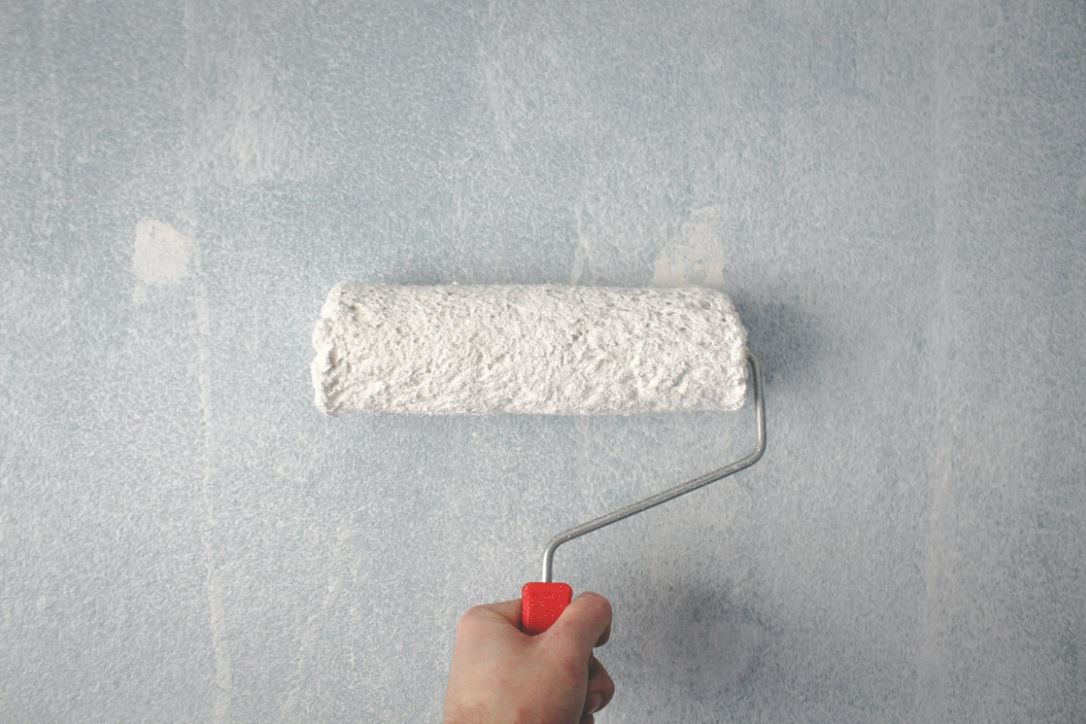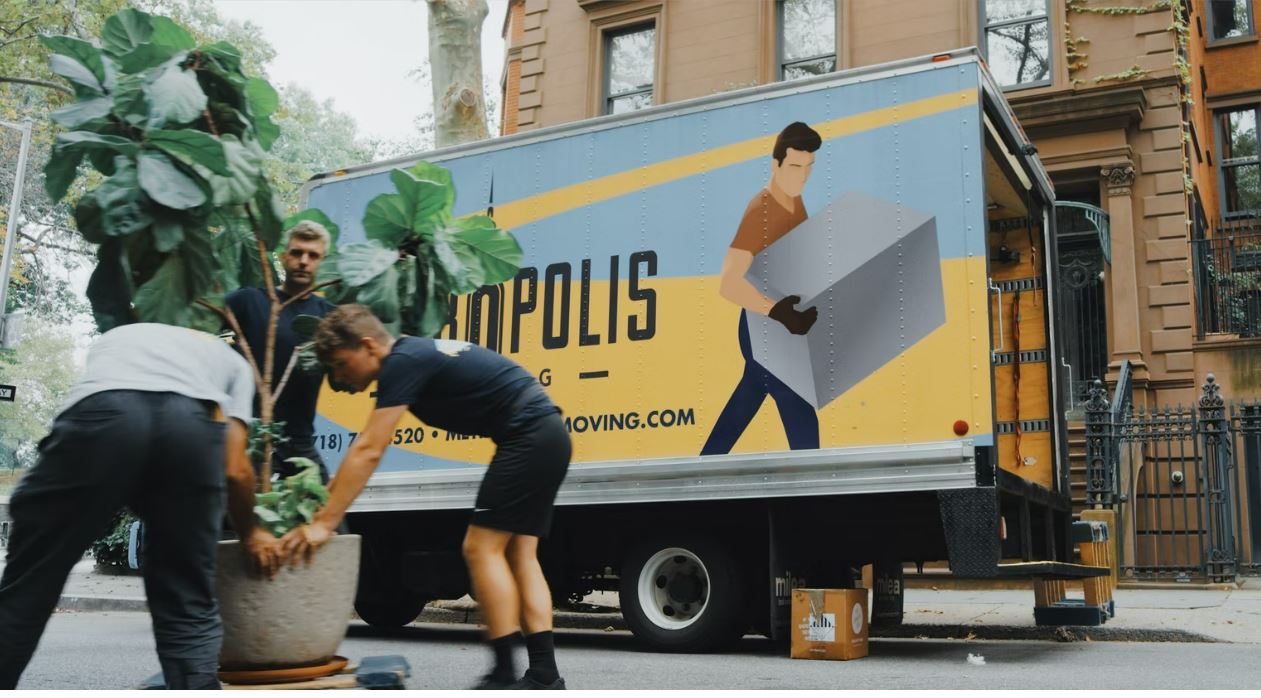Whether you’re moving across the city, to another state, or to another country, moving involves a lot of moving parts. From choosing a moving company, calculating how many boxes you’ll need, remembering who to contact, on top of where you put that one piece of paper . . . We’ll walk you through the steps you need to take and when you need to take them to help make your move as stress-free as possible.
Get Organized | 6-8 Weeks Before Moving Day
1. Research your new area
Start your move on the right foot and figure out the logistics, from locating the closest pizza parlor to finding the ideal spot for your favorite couch.
- Request a relocation packet
If you’re changing cities, look up your new Chamber of Commerce and see what resources they have for new residents. - Take measurements of your new home
Figure out if all of your furniture can fit into your new home, otherwise you might need to remove a door first. - Plan your future furniture layout
Draw a quick diagram of your new floor plan and sketch out where your furniture will go. See if there’s any furniture which doesn’t fit, so you can sell or donate it before you move.
2. Create (or update) your personal records folder
If you don’t already have a home for important personal information, moving to a new space is a great time to create one. At its heart, this is just a collection of your hard-to-replace documents as well as a record of every company or service you have an active account with. Depending on what information is kept in it, some people use a notebook, a binder, or even a whole filing cabinet.
Included are either companies you’ll want to contact before moving, either to let them know you’re changing addresses, to get copies of your records, or to cancel an account. Your personal records folder might include:
- Legal paperwork: SSN cards, birth certificates, passports, wills, and tax receipts
- Financial information: banking, investment, credit card, and loan accounts
- Utilities: home services (such as electricity, gas, water, sewage, and trash) as well as phone, cable and internet services
- Healthcare providers: information regarding optometrists, dentists, doctors, therapists, and other specialists
- Educational information: records and transcripts, especially if you have kids transferring to a new school.
3. Consider hiring professionals

It’s a good idea to get a head start on hiring a moving company, since professional moving companies can be booked out up to three months in advance. If you’re moving in the slow season (November-April), you might be able to find a mover on short notice, but still try to confirm a moving date at least six weeks in advance.
- Find potential moving companies by asking friends, family, and comparing movers online.
- Confirm licensing and insurance by verifying their Department of Transportation number.
- Request 3 or more quotes to compare pricing, availability, and service offerings.
- Understand what they will and won’t move, such as plants, cleaning supplies, or high-value items.
- Ask how they handle claims and reimbursements by requesting a copy of their claim process.
- Decide on moving insurance which is required at no extra charge.
- Make a choice, confirm moving dates, agree on all details, and sign the completed estimate.
4. Organize your move details
No matter where you’re moving, the earlier you can tack down the details of your move, the less stressful you’ll be on moving day itself.
- Request time off from work
Once you know your moving date, give your employer plenty of notice. - Know what you’ll need to move yourself
In addition to things you should expect to keep with you, like important paperwork and jewelry, there are a lot of items movers typically won’t move for you. If you have plants, liquor, or cleaning supplies, plan to move these yourself or make separate arrangements for them. - Schedule week- or day-of services
Have pets? Consider sending them to daycare to reduce stress and keep them active. Don’t feel like cleaning? Hire cleaners to prep your new home or tidy up behind the movers. - Confirm parking and other moving logistics
Find out if street parking works for your move or if you need to reserve parking for your moving truck. If you’re moving into an apartment building, ask whether you need to reserve the elevator (or use a specific one). - Get ready to travel
If you’re moving interstate, book flights or have your car serviced so it’s road trip-ready and finalize any hotel bookings.
Get Prepared - 4 Weeks Before Moving Day
5. Downsize as much as possible
Keep your move as simple as possible by decluttering.
- Strategically plan meals
Use up what’s already in your pantry, fridge, and freezer. - Sell or donate unwanted items
Host a yard sale; take clothes, books, and furniture to local resale shops; or find local charities that take gently used items. You might be surprised to find out how much you can donate—some charities even accept appliances, artwork, and cars. - Dispose responsibly
For anything you don’t want, can’t sell, and can’t donate, find out the best way to throw it away. Call your local pharmacy to see if they’ll dispose of expired medication, look up your municipality’s electronic recycling center, and ask how to get rid of chemicals instead of adding them to the landfill.
6. Arrange your utlitity services

Next up: keep all relevant parties involved when stopping and starting utilities. You’ll want to schedule start and stop dates for your monthly utilities so that neither home is ever unequipped,as well as to prevent unwanted charges made to your account.
- Research your new utility companies
Most of the time, a municipality will only have one company in charge of each utility.For utilities where you have more than one option(such as internet and cable), research to see who you’ll sign with for the next year. - Schedule power-down or hand-off dates
Call utility companies in advance to let them know when you’ll no longer be responsible for the bill. Notify or work with your landlord or the next homeowner about when should resume or take over responsibility for each utility. - Set up new accounts and make installation appointments
If you’re just taking over an account, the utility company may not need to send a technician out before you have service. However, for new or reconnecting utilities, you’ll want to arrange an appointment so you won’t spend your first days without power or internet.
7. Change mailing addresses
Although you can forward your mail as late as three days before you move, the USPS recommends giving them two weeks’ notice for an address change. In addition to the USPS, you should give plenty of notice to the following agencies and companies so they know how to keep in contact.
- Government Agencies
Contact the Department of Motor Vehicles, the Internal Revenue Service, Voter Registration, and Social Security Administration. Each state has different requirements on when they need your new address, which can be done online or in-person. - Financial Institutions
Make sure your banks, investment brokerages, credit card companies, loan issuers, credit reporting agencies (i.e. Experian, TransUnion, and Equifax) and other financial companies know where to send your statements and bills. - Insurance Companies
You’ll need to notify each insurance company of your move. Additionally, you should double check whether you’ll still have coverage in your new location or if you’ll need to find a new company or plan. - Utility Companies
While you’re scheduling stop dates or service transfers with your existing utility companies, give them your new address. They’ll need it to send you a bill for the last weeks’ of service at your previous home. - Your Employer
In addition to requesting time off for moving day, contact your company’s HR department so they can update where they send your W-2 and other paperwork. - Service Professionals
If your new home is still within easy access of your regular doctors, dentists, therapists, and other healthcare providers, let them know your new address so they can send you appointment reminders (or contact them to say you’re leaving their network). - Retail and Subscriptions
Any company you have an account with or enjoy receiving magazines from needs to know your new address. Not sure if you’ve missed any? Mail forwarding with the USPS will catch any mail going to your old address for up to six months after you move. - Friends and Family
Last but not least, don’t forget to give your new address to the people you care about.
Start Packing - 3 Weeks Before Moving Day
8. Get creative with supplies

Sourcing packing materials early is a great way to give yourself time to figure out the best way to pack your possessions. Although we love the standard brown moving box, there are better ways to pack up your belongings.
- Find boxes for free
Ask nearby stores and restaurants for boxes they’d otherwise recycle. Check with your neighbors or local buy-nothing groups to see if anyone has moved recently and has gently-used boxes to share. - Look for specialty boxes
While general-purpose boxes work great for clothes, books, and other items that don’t mind being jostled around, a specialty box can help protect against damage or make unpacking easier. You can get them for free (ask your local coffee shop for an empty bottle box to help pack your pantry), or you can purchase a wardrobe box with a built-in hanger system. - Buy colored packing tape and permanent markers
Choose a specific color for each room. When you pack up a box belonging to that room, only use the correct tape or marker so the movers can tell where that box needs to go in your new home.
9. Stay organized
Packing well is as much about making sure your belongings stay safe during the move as it is about making it easy to unpack in your new home.
- Take photos of electronics before unplugging them, so you know exactly how to set up your TV-Cable-Box-DVD-Player-Video-Game-System without crossing a wire.
- Catalog how to reassemble your furniture, but don't fret since most companies will have digital copies online.
- Store parts in small, labeled bags for each furniture item or electronic device clearly labeled.
- Separate valuables and anything else that you want to move personally, including your moving company paperwork with your personal files.
10. Keep an inventory
An inventory is a list of every item you’re moving from your old home to your new one. It helps your movers keep track of everything in your shipment as well as helps you quickly identify what—if anything—is missing from your delivery.
- Clearly label every box In addition to labeling any ‘fragile’ boxes, write the name of the room it belongs to, what number it is, and a general description directly on to the box. For example: Kitchen #2 - Cups & Glasses.
- Write down everything that goes into each box
This is your actual inventory. Your movers will include a copy of it with your Bill of Lading. If anything goes missing or is damaged, this piece of paper is critical to determining whether the movers are at fault. - Make note of your belongings’ conditions
If possible, take photographs as well as writing a short description so that if something is accidentally scratched, stained, or dinged during the move, it’s more likely to be covered by moving insurance. - Check that absolutely everything is on the inventory
Anything that a mover needs to pick up, put on the truck, and deliver to your new home needs to be on the list, either as a line item by itself or included as part of a box. - Declare any items valued at over $100 per pound
This is sometimes called a “high value inventory” and kept separately from your regular inventory. Without a signed high value inventory, it’s unlikely that you’ll be fairly compensated for any damages or losses incurred during the move. - Don’t sign an inventory or bill of lading you don’t agree with
Both you and the movers need to agree on the inventory list and item condition before signing.
11. Keep packing simple
Even if you’re only moving a studio, packing can seem like a tedious chore. Here are a few ways to be fully packed by moving day instead of trying to pull an all-nighter the day before.
- Start early
If possible, make a section of your home your packing station. Start with clothes that are out of season, hobbies you haven’t picked up in a while, or anything that’s currently living at the back of your closet. - Do a little bit everyday
It can be difficult to find the time needed to pack everything in one go (especially if you have to run out for more packing supplies partway through). - Save the best for last
If you’re actively using something in the days leading up to your move, chances are you’ll want to unpack that first. Keep “essentials” boxes separate and make them easy to find with clear labels (and maybe hot neon tape).
Cross Your T’s - 2 Weeks before Moving Day
12. Assemble your moving file

Moving involves a lot of paperwork, some of which you’ll want to keep handy on moving day. Your moving file is a physical folder containing all your move-related documents. It should include your mover’s contact information, the details of your move, and all printed receipts and bills.
- Confirm your moving date and arrangements
While you never want to hear that your move is not on schedule, it’s better to find out in advance than on moving day. Contact your moving company to confirm pickup and delivery times, who will be present on moving day, and contact information. - Make a digital copy
Take scans or photos of documents and email them to your account or upload them to your cloud storage service so you have a copy if something happens to the original. - Know your backup plan
Bad traffic, weather, or a flat tire can delay a moving truck. If you’re on a tight schedule, plan out next steps for a worst-case scenario. Hopefully you won’t need it, but knowing you have options can help with peace of mind later on.
13. Always triple check
If you’re moving to a new city, new state, or new country, you don’t want to get settled in your new home and realize you need to turn around and go back . Give these neighborhood locations a once-over before you seal the last box:
- Dry cleaners and laundromats for forgotten laundry, blankets, and formal clothing.
- Banks and credit unions for anything kept in a safe deposit box.
- Gyms for athletic clothes and other sports equipment.
- School lockers if you have children, check their lockers for clothes and supplies as well as the school’s lost and found box for any missing items.
Packing Tips:
- Backup your computer on an external hard drive or through your cloud storage service
- Remove light bulbs from lamps and pack separately
- Fill any prescriptions to avoid running to the pharmacy during the move
Finalize Arrangements | 1 Week before Moving Day
14. Arrange payment
Always wait to pay for your move until after delivery and, if possible, use a credit card. While you might get asked to put down a reasonable deposit (less than 25% of the move), reputable moving companies will never ask you to pay upfront. Paying via credit card instead of cash also proves that you did pay for your move and gives you additional backup if you have to contest charges.
- Check your contract for payment type
Most movers accept credit cards, but your contract should specify if you’ll pay with another method, such as a cashier’s check, certified funds, or money order. - Be prepared to finalize payment
Whether making a payment towards your credit card balance early to have enough credit or purchasing a cashier’s check, be ready to pay your movers once they’ve completed the work. - Have cash on hand to tip your movers
Cash is not the most secure way to pay your moving bill, but it’s a great way to show appreciation for the people actually moving your belongings. As an estimate, aim for $5 to $10 per person per hour or between 5% and 10% of your move’s total cost.
15. Prepare your homes

If you have access to your new home, there won’t be an easier time to clean or paint than before you’ve moved all your furniture in. It’s also good practice to make small repairs to your old place—especially if it can help you get a deposit back.
- Repair minor dings and scratches
As you pack pictures and disassemble furniture, check the walls for damage that can be easily repaired with a bit of putty, a patch, and some paint. - Hire professionals
For a more care-free move, let professionals do the work of preparing your new home. Consider hiring carpet cleaners, painters, hardwood floor refinishers, blind installers, and other experts to do the heavy lifting. - Defrost the refrigerator and freezer
Whether you’re leaving it for the next tenant or taking it with you, a fridge is much easier to clean at room-temperature. Turn it off or leave it unplugged overnight with a towel around it to catch any meltwater.
Packing tips:
- Clean off your outdoor furniture from leaves, dust, and dirt.
- Drain water hoses from any appliance you’re taking with you, like your washing machine and the ice maker of your fridge.
- Drain the oil and gas from your lawn mower, snow blower, and other appliances into approved containers—either to dispose safely or for you to move directly, as moving companies usually aren’t allowed to transport hazardous chemicals.
Put Everything into Motion - Moving Day
16. Finalize paperwork
Moving day is when everything comes together. Take these last steps to protect your move from trouble and give yourself recourse if anything happens to go wrong.
- Verify the moving truck’s USDOT number
The number painted on the side of the truck should match the one on your estimate. Additionally, the company name and contact information you’ve been given should match what the U.S. Department of Transportation has on record. - Confirm the inventory
Keep a copy of the version signed by both you and the movers. As mentioned earlier, don’t sign a copy of an inventory that is blank, incomplete, or says something is in worse condition than it is. - Read all paperwork carefully
The same rules apply for the estimate, order of service, and bill of lading as the inventory. By signing them you agree to all of their terms, including delivery time, payment amount and method, and insurance coverage.
17. During your move

It can be tempting to set up your movers and travel to your new home first, but it’s important to stay until the movers have finished packing and completed the final inventory.
- Walk with the movers as they complete the inventory
Make sure that you note everything they’re moving and anything you’re taking personally. This is also when you can resolve any questions about the condition of items being moved. - Give the driver your contact information and directions to your new house
If they run into traffic, they can give you a heads-up. - Protect your floors and carpet
Use furniture sliders and putting down rugs or non-slip coverings in high-traffic areas. - At your new home, direct boxes to the right rooms
If you used different color tape, mark doors or a nearby wall with a sticker that’s the same color to make it easy to tell if a box is out of place.
18. Items delivery
After the moving truck has arrived at your new place, there are a few last things to tick off the agenda.
- Pay the driver according to what you agreed on
The driver is allowed to collect payment before your belongings are unloaded from the truck, but the total you are charged cannot be greater than 110% of the estimate (for a non-binding estimate). - Use the inventory list to note missing or damaged items
Do this before you sign any paperwork, then call the moving company to file a claim. - Complete a walk-through of your old place
Check for any forgotten items, finish any last-minute cleaning tasks, and take photographs of its condition to prepare for a final walk-through with your landlord.
Getting Prepared
Now that you know each and every step, consider making your move a little breezier by hiring a professional moving company.
To find the right moving company for your needs, start by collecting quotes from three of our reputable, top-rated movers.



